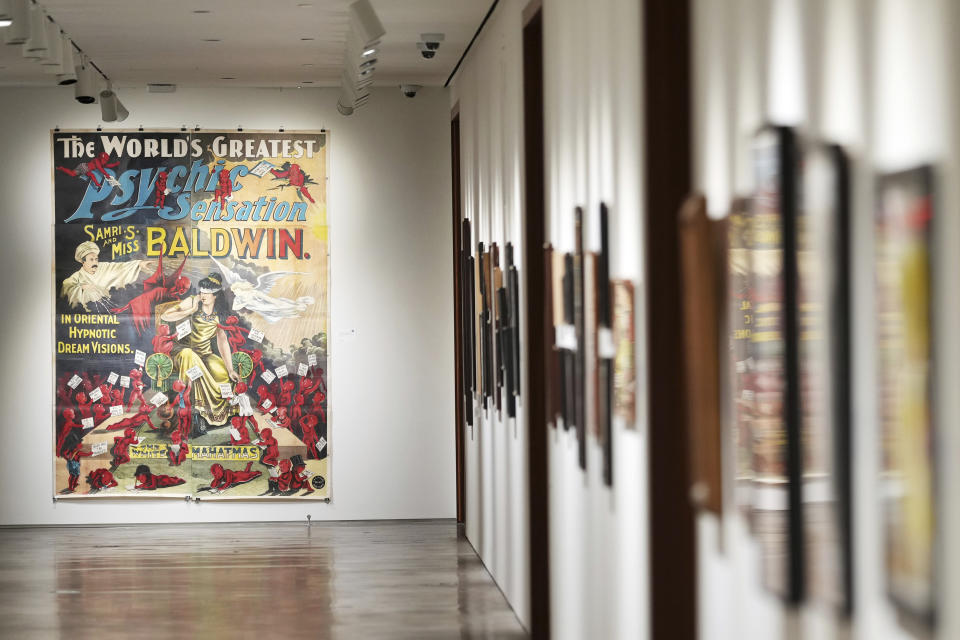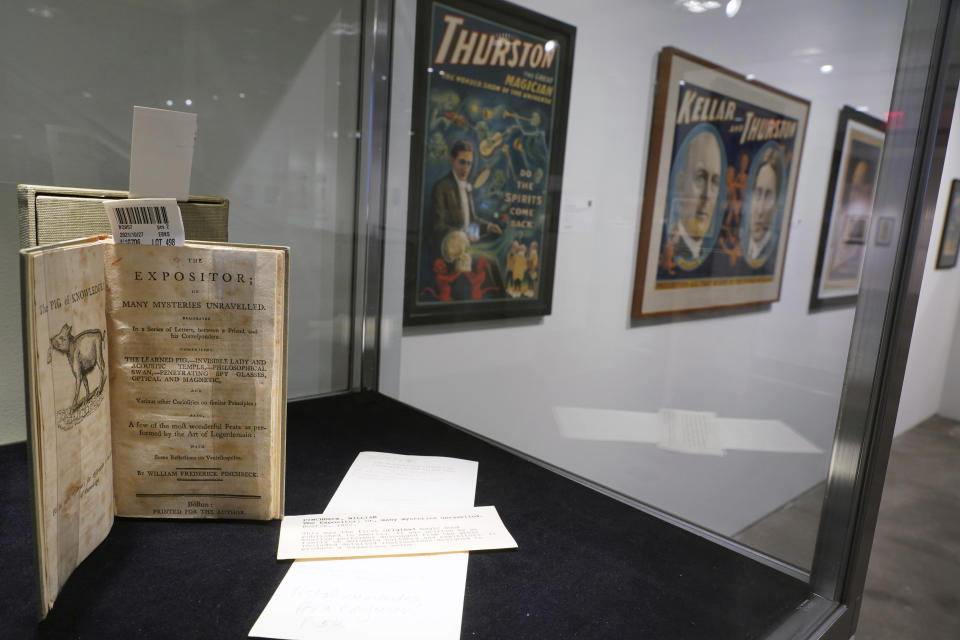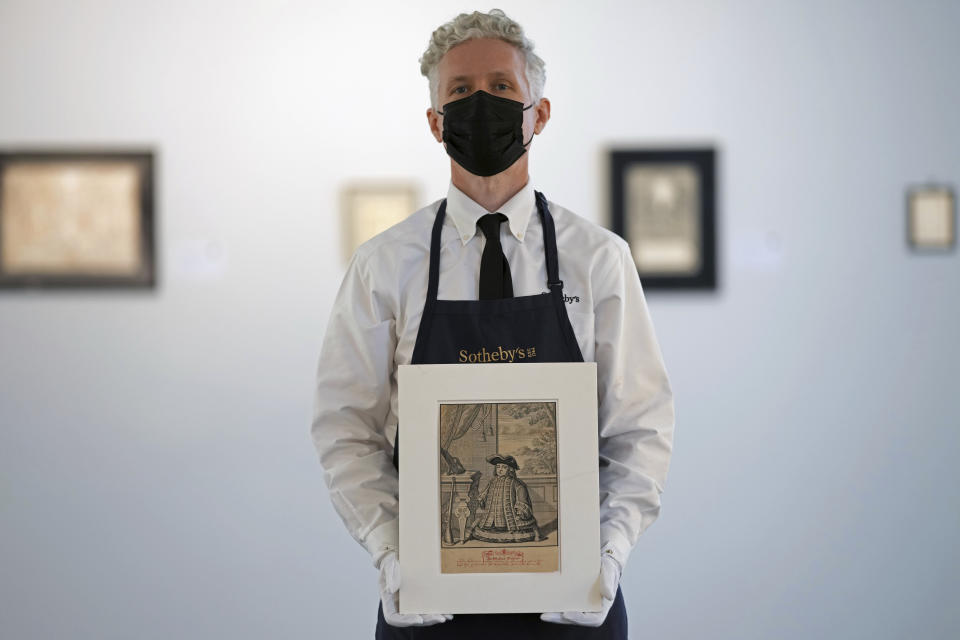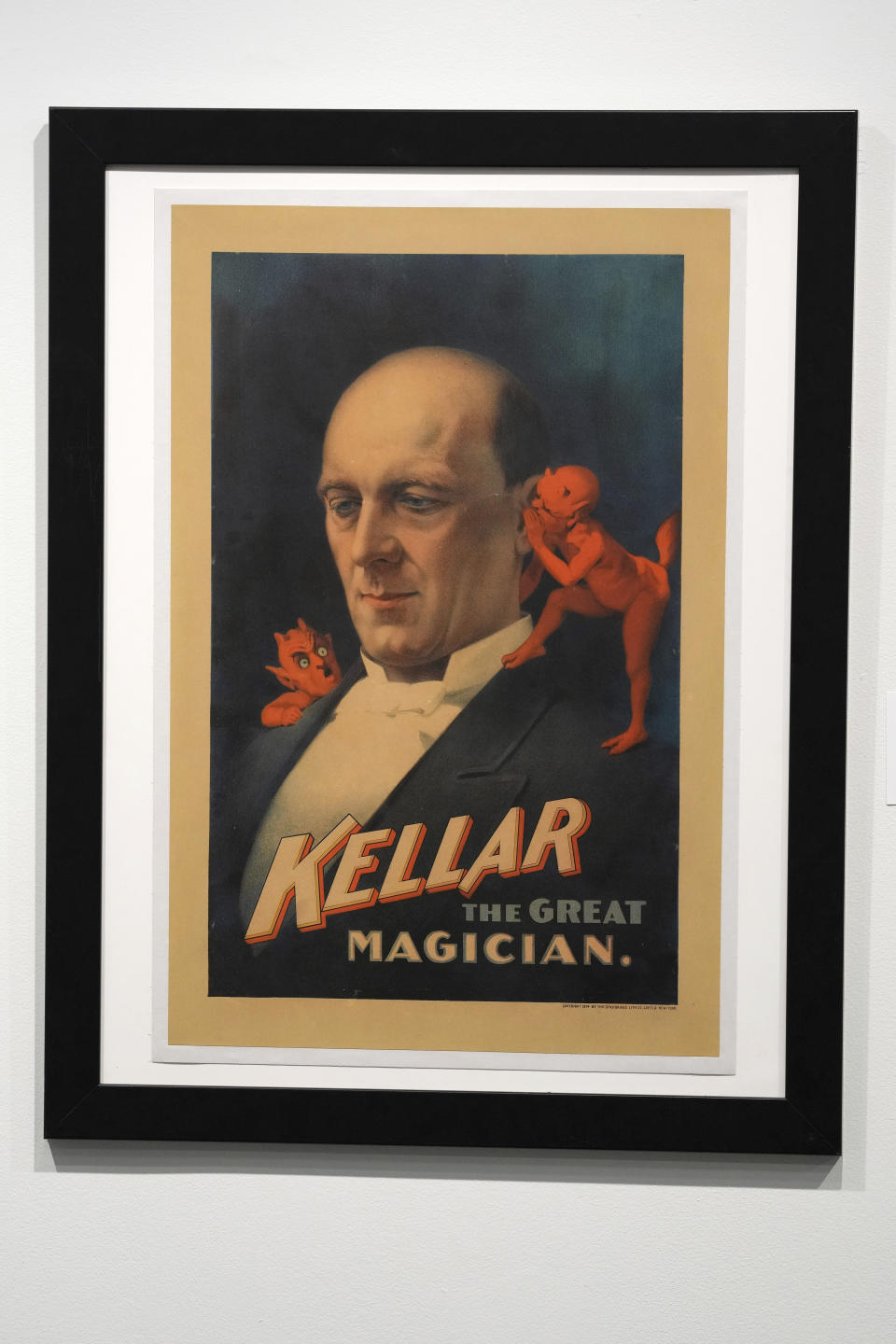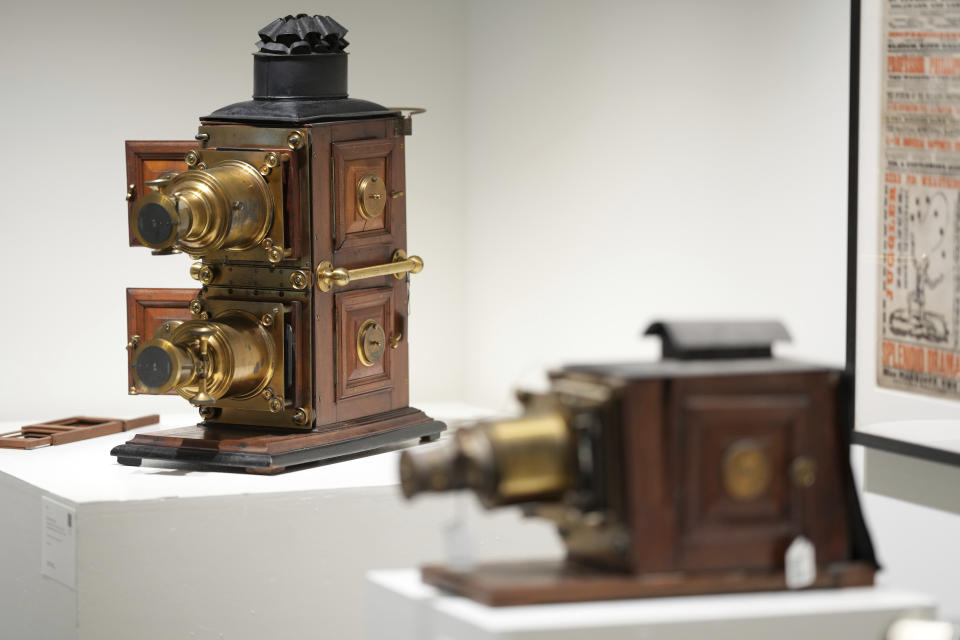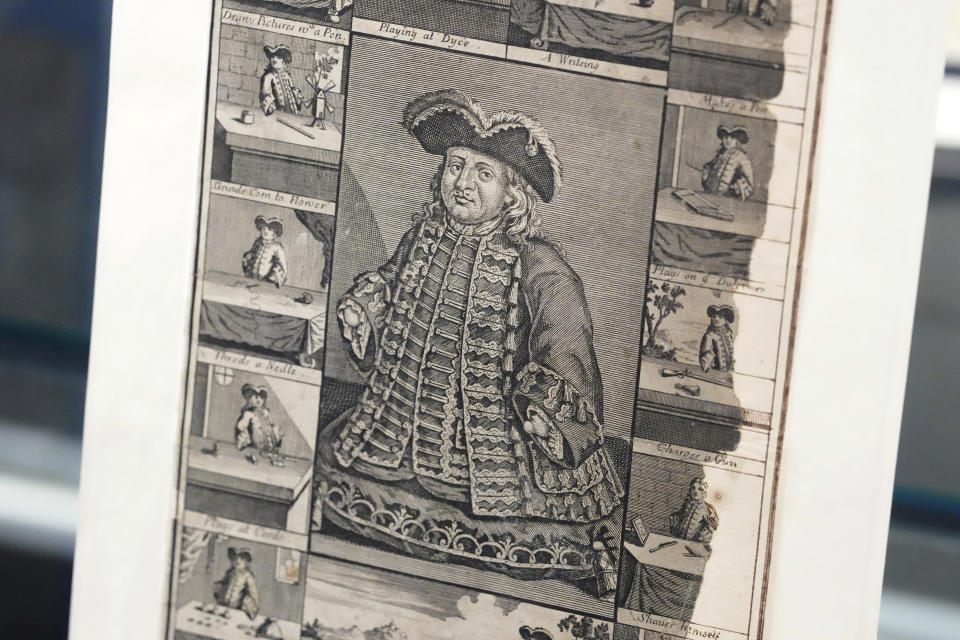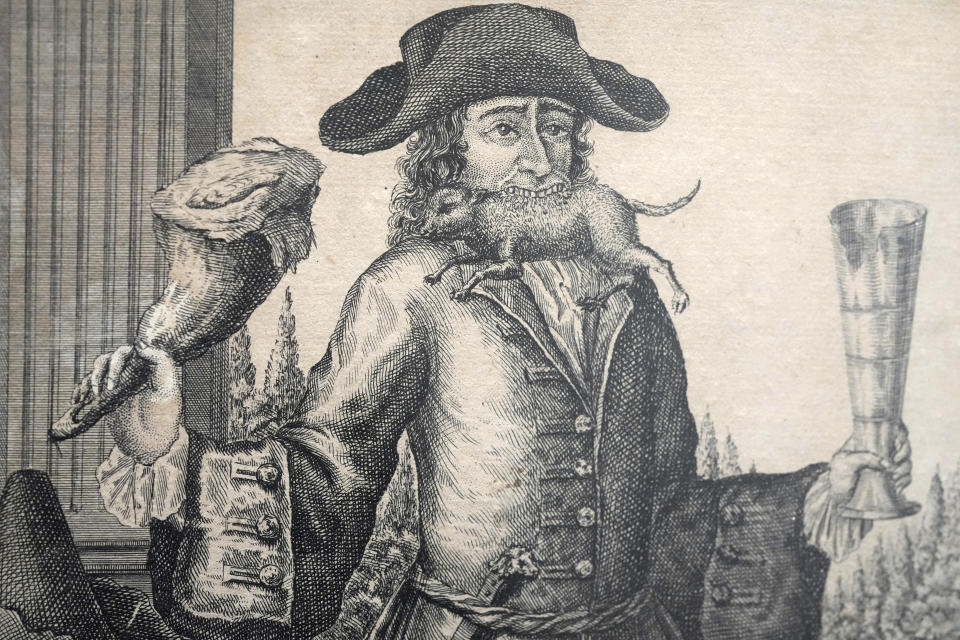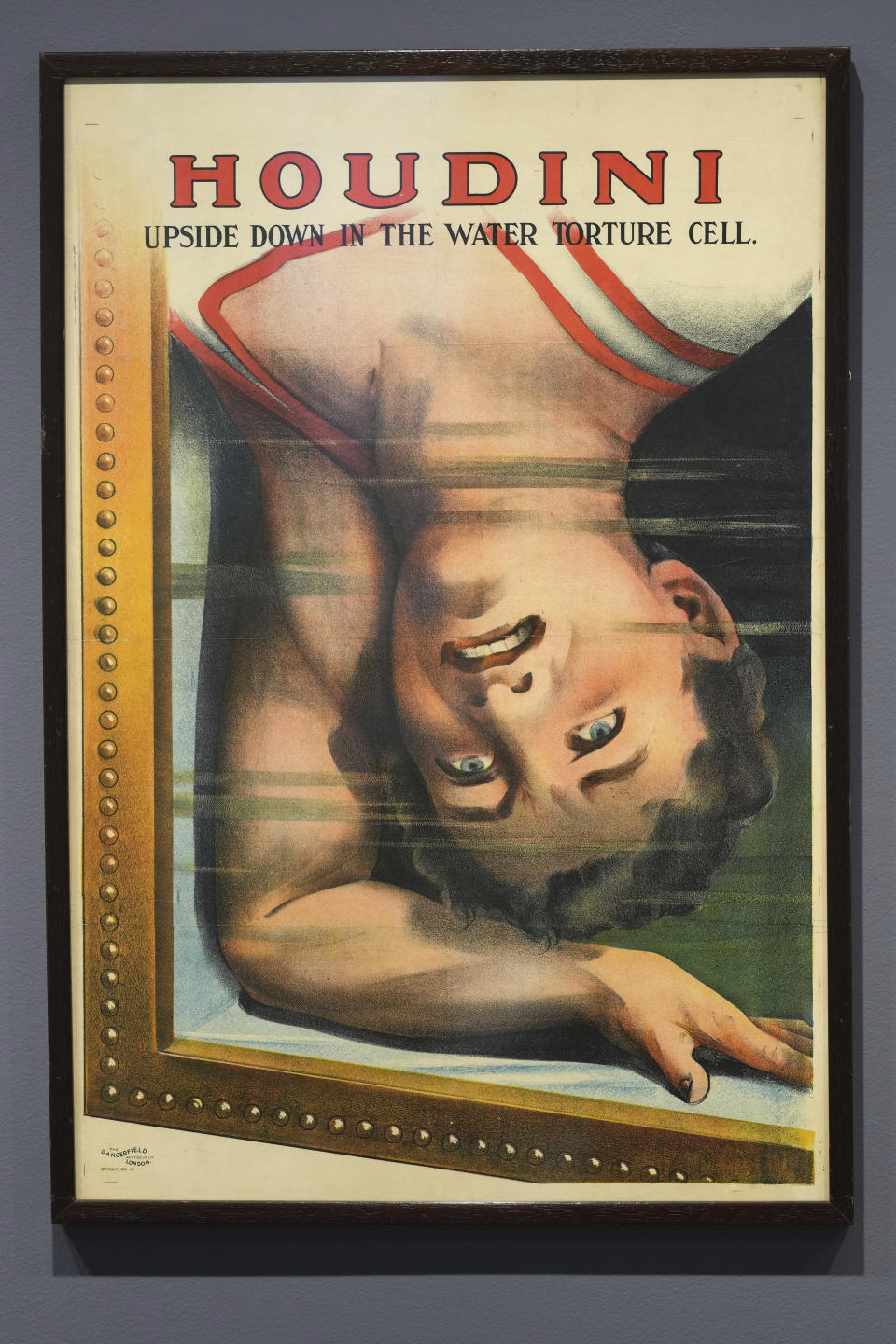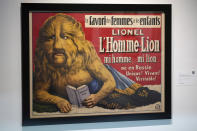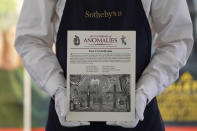A magical trove of Ricky Jay ephemera hits auction block
NEW YORK (AP) — Conjurers, cheats, hustlers, hoaxsters, pranksters, jokesters, posturers, pretenders, sideshow showmen, armless calligraphers, mechanical marvels and popular entertainments.
Those were the things that interested the grizzled Ricky Jay, the sleight-of-hand artist, card shark, author, actor and scholar extraordinaire on all of the above who died in 2018 at age 72. When he passed, he left behind a vast trove of rare books, posters, broadsides and other artifacts that honored many who came before him.
Now, nearly 2,000 of more than 10,000 pieces that stuffed his Beverly Hill's house will make their way into the hands of those who care to bid during an unusual upcoming Sotheby's auction after Jay's widow, the Emmy-winning producer Chrisann Verges, turned them over.
Selby Kiffer, Sotheby's international senior specialist for books and manuscripts, was one of two experts from the auction house to visit Verges at home in California and select what they wanted for the Ricky Jay Collection.
“It’s really a collection of collections,” Kiffer said ahead of the two-day live auction starting Wednesday. “The challenge was to find an institution that was interested not only in magic but also in circus, not only in books but also in posters and apparatus, and all of the elements of popular entertainment.”
Divided into 634 lots, Sotheby's estimates the collection at $2.2 million to $3.2 million, hoping for bidders from those inside Jay's world, magic admirers from afar and art enthusiasts on the hunt to decorate their walls. There's more than enough to choose from.
Harry Houdini is ever present, an obligation of sorts to any collector like Jay. Closer to Jay's heart was the magician Max Malini of the early 20th century. A poster advertises Malini's appearance at King's Theatre in New York with a rounded portrait, medals on one lapel and touting performances before six heads of state. Dating to around 1916, it's one of only two known copies and estimated to fetch $15,000 to $20,000.
Jay was so enamored of Malini that he devoted an entire chapter of his book, “Learned Pigs & Fireproof Women,” to the man he described as the “last of the mountebanks.”
Malini, Jay wrote, was rarely featured on music hall or theater stages. Rather, he was the “embodiment of what a magician should be. Not a performer who requires a fully equipped stage, elaborate apparatus, elephants or handcuffs to accomplish his mysteries, but one who can stand a few inches from you and with a borrowed coin, a lemon, a knife, a tumbler or a pack of cards convince you he performed miracles.”
A rare Houdini poster from around 1913 depicts the escape artist upside down in his water torture cell, a look of dire concern on his face that told the story in the color lithograph valued at $40,000 to $60,000.
An entire room on display at Sotheby's spacious Manhattan headquarters is dedicated to another who drew Jay's attention: Matthias Buchinger. He was a German artist, magician and calligrapher born without hands or lower legs and measuring just 29 inches tall. Buchinger, who died in 1740 and lived most of his life in the UK, was married four times and had at least 14 children.
Much of Buchinger's living was made in calligraphy, including his inking of family trees for money. One of Kiffer's favorite pieces up for auction is the tree Buchinger created for his own family, demonstrating his unlikely skill with a pen but also knife or scissors for intricate paper overlays. Done in 1734, the tree is marked for sale at $20,000 to $30,000.
Jay, Kiffer said, was not just a collector who wanted all the things.
“He was doing serious research. And I think in part because he was curious about his predecessors, he wondered what illusions and tricks they did and how they accomplished them. But he lectured and published widely. He was not a trophy hunter who just said, `Well, I want to get the most expensive book on conjuring and the rarest, most expensive Houdini poster.' He was looking for things that other people might not recognize the significance of,” Kiffer explained.
Jay was Brooklyn born as Richard Jay Potash and grew up in Elizabeth, New Jersey. He rarely spoke publicly about his parents but was introduced to magic by a grandfather, an amateur enthusiast who encouraged Jay to take to the stage and screen as a boy wonder. His first TV appearance was at age 7. By his 20s, a long-haired Jay was on his way to stardom, opening for rock bands and appearing on talk shows.
Friend and admirer Steve Martin once described Jay thusly: “The swindler who never swindled, the con man who never conned, the cheat who never cheated, and mostly, the eccentric collector of all that is eccentric.”
Jay was a frequent presence in the films of David Mamet, including “House of Games." He also had a recurring role in HBO's “Deadwood,” playing card shark Eddie Sawyer, and was a go-to consultant in Hollywood on all things magic, gambling and cards. Paul Thomas Anderson put him in the films “Boogie Nights" and Magnolia.”
Among Jay's talents was card throwing. He once held the Guinness World Record for a distance of 190 feet at 90 mph. He often turned a lowly playing deck into weaponry. He could throw a single card so it would penetrate a watermelon and shear a wooden pencil in two.
The mechanical objects up for auction include “Neppy,” Jay's smartly dressed automaton and veteran of hundreds of performances around the world in his stage show, “Ricky Jay & His 52 Assistants.” Named for the Viennese card artist Dr. Johan Nepomuk Hofzinger, Neppy performed a silent routine with his human partner. A card would be torn, handed to audience members, collected and restored by the bespoke Neppy, who stands on a small, red velvet stage.
Sotheby's priced Neppy at $10,000 to $15,000.
In all, Jay published 11 books that reflect his web of passions, from cards and curious characters to mysteries unraveled and the admired Buchinger. Jay lent the bulk of his Buchinger treasures to the Metropolitan Museum of Art for an exhibition in 2016 and wrote the catalog himself.
Perhaps just as telling of the collector as the collected, Kiffer pinpointed Jay's Buchinger fascination this way: “What he liked about figures like Buchinger wasn't how different they were but really how similar they were to other people.”
___
Follow Leanne Italie on Twitter at http://twitter.com/litalie

 money
money 